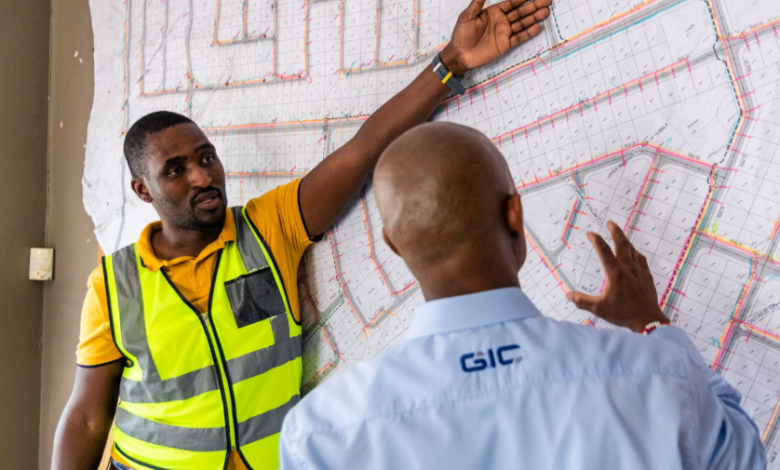Strategic Start: How to Plan an Infrastructure Project for Long-Term Success

Starting an infrastructure project is no small feat. Whether you’re building roads, water systems, energy facilities, or digital networks, the success of the entire endeavor often hinges on the strength of your initial planning. A well-executed infrastructure plan doesn’t just ensure smooth construction—it supports long-term functionality, sustainability, and community value.
Here’s how to lay the groundwork for an infrastructure project that stands the test of time.
1. Define Clear Goals and Scope
The initial phase of any infrastructure project begins with a well-defined purpose. Identify the core issue the project aims to address, determine the primary beneficiaries, and establish clear metrics for success. This clarity not only ensures alignment among stakeholders but also creates a solid framework for strategic planning.
Equally important is defining the project’s scope in detail. To prevent scope creep—the common pitfall of projects expanding beyond their original intent—pinpoint key deliverables from the outset. For instance, when planning a new bridge, decide early whether features like pedestrian walkways or bike lanes are essential.
At this stage, it’s also wise to consult with material suppliers, such as hot rolled steel providers, to assess the availability and suitability of structural materials. Involving these partners early can influence design decisions and ensure your project is both practical and cost-effective from the ground up.
See also: Root Suit Net Worth: How Much Is the Business Worth After Shark Tank?
2. Conduct Thorough Feasibility Studies
Feasibility studies are critical in evaluating whether your proposed project is viable. This includes technical, economic, environmental, and legal assessments. A detailed feasibility study will help identify potential roadblocks, project costs, resource requirements, and timeline projections.
Also, consider future needs and adaptability. Infrastructure should be scalable or modifiable to accommodate population growth, climate changes, or advances in technology.
3. Secure Stakeholder Buy-In
Infrastructure projects typically involve many stakeholders: government agencies, private investors, local communities, and environmental groups. Engaging these groups early in the planning phase creates transparency and helps prevent conflict later.
Host public forums, gather feedback, and incorporate diverse perspectives into the project’s design. When people feel heard, they’re more likely to support the project, even through temporary inconveniences like construction disruptions.
4. Develop a Realistic Budget and Funding Plan
Cost overruns are one of the most common pitfalls in infrastructure projects. A realistic, well-researched budget should include not only material and labor costs but also contingencies for delays, legal issues, and inflation.
Once the budget is in place, secure funding through government grants, private investments, public-private partnerships, or other financing mechanisms. Transparent financial planning also boosts investor and public confidence in the project.
5. Address Environmental and Regulatory Concerns
Modern infrastructure planning must prioritize sustainability. Conduct environmental impact assessments (EIAs) to ensure your project minimizes harm to local ecosystems and complies with environmental regulations.
Green infrastructure—using natural systems like wetlands to manage stormwater—is gaining traction as a sustainable alternative to traditional development. Consider incorporating eco-friendly elements that align with long-term environmental goals.
Moreover, ensure compliance with local, state, and federal regulations. Zoning laws, land use permissions, and environmental clearances can be time-consuming, so it’s best to start early.
6. Create a Detailed Project Timeline
Time is money, especially in infrastructure. Develop a realistic project timeline that includes all phases: design, permitting, procurement, construction, and commissioning. Break down large goals into manageable milestones, and assign clear responsibilities to each team.
Use project management software to track progress, communicate changes, and ensure deadlines are met. Building in buffer time can also help absorb unexpected delays.
7. Plan for Maintenance and Lifecycle Costs
Infrastructure isn’t just about building—it’s about sustaining. Planning for ongoing maintenance and future upgrades is essential for long-term success. Estimate the total cost of ownership, including repairs, staffing, and utility use.
Establish a management system or partner with organizations responsible for long-term upkeep. Smart infrastructure solutions, such as sensors for monitoring bridge stress or water leaks, can reduce maintenance costs and extend project life.
8. Communicate Transparently and Often
Communication can make or break public support. Keep stakeholders informed with regular updates, milestones, and project adjustments. Transparency fosters trust and helps avoid misinformation or resistance.
Consider creating a project website or social media presence to share progress photos, updates, and community impact stories. Open lines of communication are essential for dealing with any public concerns or unexpected challenges.
Final Thoughts
Infrastructure projects are the backbone of thriving communities and economies. But building something that lasts takes more than bricks and mortar—it requires smart planning, solid partnerships, and long-term thinking.
By defining clear goals, conducting robust studies, securing stakeholder input, and addressing environmental and financial realities from the start, you can ensure your project doesn’t just succeed today—but continues to serve well into the future.
After all, great infrastructure doesn’t just meet current needs—it anticipates the needs of tomorrow.




